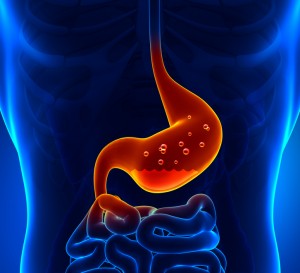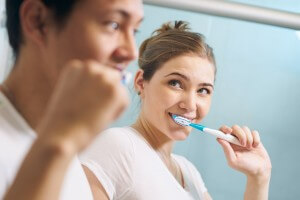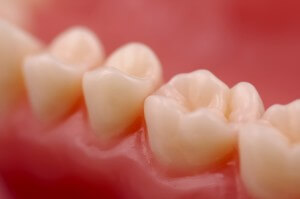Acid Reflux is a condition that occurs when intestinal fluids escape your stomach into your esophagus and even your mouth. It can cause heartburn, bad breath, sinus infections, and difficulty swallowing. Fatty foods, or foods high in acid such as tomatoes or citrus fruits, can trigger reflux, as can caffeine and alcohol.
What many people may not realize is that reflux can negatively impact your dental health as well.
What Does This Have to Do with Teeth?
Increased acidity in your mouth can weaken and erode tooth enamel, particularly rear molars. In fact, your dentist may be the first to notice reflux concerns, as heartburn isn’t a symptom for everyone.
If you do experience reflux, avoid brushing your teeth immediately after an episode, as brushing could further damage teeth weakened by stomach acid. Instead, rinse your mouth well with water, or (even better) with a baking soda solution to reduce the acidity in your mouth. Chewing some sugar-free gum can help too, if rinsing for some reason isn’t immediately practical.
Experiencing Reflux?
Over-the-counter medications can ease reflux symptoms, but if you have concerns about acid reflux, you should speak to your physician.
You should also be sure to keep twice-yearly dental appointments to help identify dental and other health warning signs. We can also provide recommendations for mitigating enamel erosion and other dental issues—Meyer & Johns is always here to help.


